
1. Reports indicate that Lenovo’s first self-developed 5nm chip has successfully taped out, aimed at tablet computers.
2. The smart car sector is accelerating the application of in-vehicle storage, with domestic EEPROMs entering the market.
3. The Ministry of Foreign Affairs responds to the U.S. plan to expand chip export restrictions to China.
4. The advancing MEMS technology requires comprehensive strategies.
5. 【Chip Vision】Concerning global electric vehicle market dominance! The EU battery regulations are about to be implemented.
6. With collective performance declines in the first half of the year, when will the “spring” for panel manufacturers arrive?
7. Insiders reveal that Apple will be the first to adopt TSMC’s N3E technology.
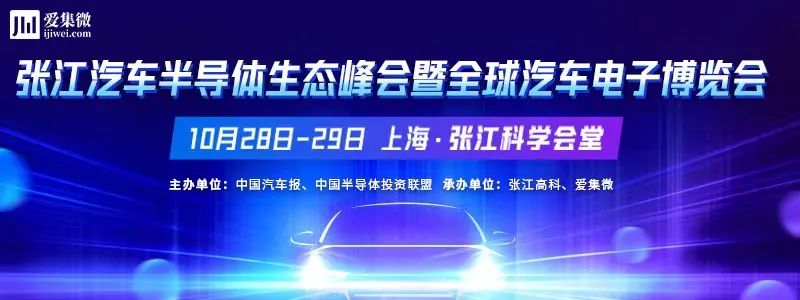
1. Reports indicate that Lenovo’s first self-developed 5nm chip has successfully taped out, aimed at tablet computers.
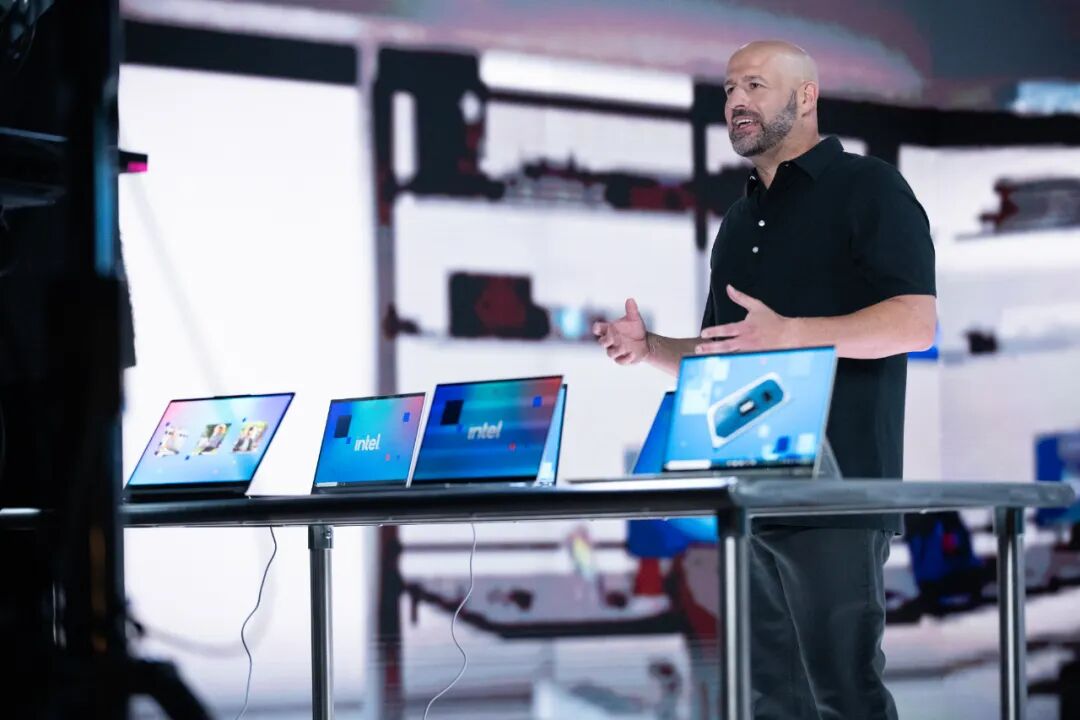
According to reports from Jiwei Network, it has recently been announced that the 5nm chip developed by Lenovo Group’s chip design company, Dingdao Zhixin, has successfully taped out and has been powered on. Functional testing will follow, with mass production expected by the end of this year.
Insiders revealed that “Lenovo’s chip is specifically designed for tablet applications.” Lenovo Group has not officially responded to this rumor.
It is known that Dingdao Zhixin has been established for less than eight months, making it difficult to design a 5nm chip in just a few months. Typically, it takes at least two years from the design of an advanced process chip to successful tape-out. This suggests that Lenovo has been conducting internal research and development for at least two years prior to Dingdao Zhixin’s establishment.
Public information shows that Dingdao Zhixin’s legal representative is Jia Zhaohui, Senior Vice President of Lenovo Group and General Manager of IDG Consumer Business & Leading Innovation Center. General Manager Shi Gongzheng has previously worked at companies such as Unisoc, Huawei, and OPPO. The SoC head, Yuan Wei, also has experience at Unisoc. Insiders have also revealed that Lenovo’s chip team has grown to over 300 people and has been in development for two years.
Industry voices speculate that Lenovo’s self-developed chip is primarily aimed at the PC market, where Lenovo has a stronger market influence. This perspective suggests that the chip will first be tested in tablet products but is not primarily targeted at the tablet market. IDC data shows that total PC shipments reached 348.8 million units in 2021, with Lenovo’s shipments reaching 81.93 million units, ranking first with a market share of 23.5%, closely followed by HP at 21.2%. In this context, Lenovo may develop its own Arm processors aimed at PC products to enhance its product competitiveness.
Lenovo’s layout for self-developed chips has long been evident. In addition to developing Arm architecture processors, Lenovo is also involved in the currently popular RISC-V architecture chip development. Previously, Lenovo launched a self-developed chip, the LA2 intelligent embedded controller, which includes a CPU, GPU, NN neural network core, MCU, DSP, and other structures based on the RISC-V architecture.

2. The smart car sector is accelerating the application of in-vehicle storage, with domestic EEPROMs entering the market.
According to Jiwei Network, the increasing intelligence and connectivity of automobiles are accelerating the growth of the automotive storage chip market. The significant increase in the number and resolution of in-car image sensors is continuously driving the demand for data storage, while the evolution towards L3 and L4 level autonomous driving is also raising the requirements for in-car information aggregation and transmission. All of these point to a growing demand for automotive storage chips.
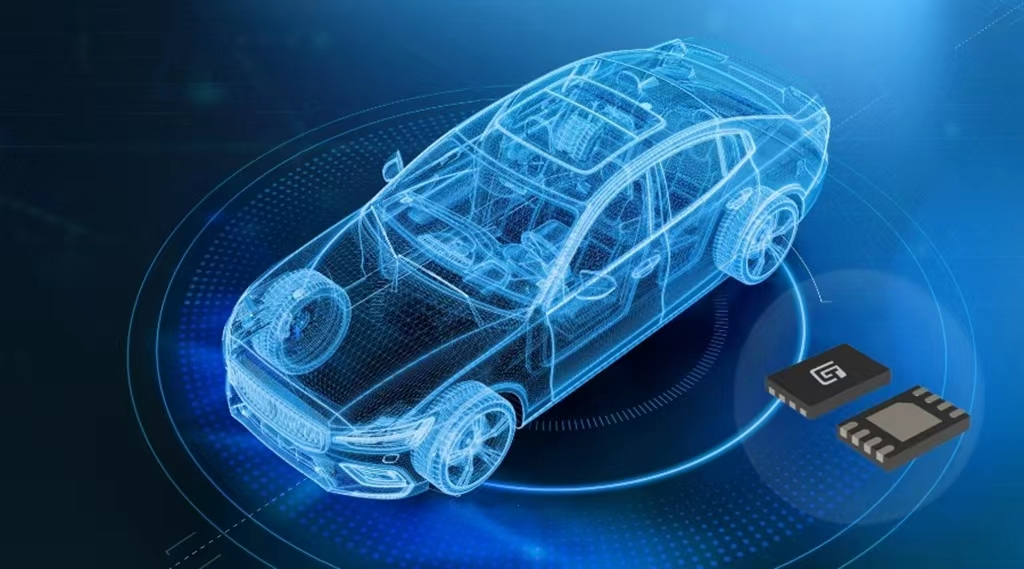
As a general-purpose non-volatile storage chip, EEPROM (Electrically Erasable Programmable Read-Only Memory) has been increasingly recognized in automotive storage applications due to its reliability in high and low temperatures, 100 years of data retention capability, and 4 million write/erase cycles. Applications such as ADAS, intelligent cockpits, smart connectivity, three electric systems, micro-motor switches, and chassis transmission are all driving the demand for EEPROM. Data shows that a traditional fuel vehicle uses about 15-20 EEPROMs, while a smart electric vehicle requires 30-40 EEPROMs, significantly increasing the demand per vehicle.
The long-standing dominance of foreign companies in automotive semiconductors may find breakthroughs in some niche markets, with automotive-grade storage chips becoming the next most promising market. In recent years, several domestic manufacturers have gradually emerged in the automotive-grade EEPROM niche.
EEPROM’s potential in automotive applications is accelerating its release.
As one of the important products in storage chips, EEPROM has clear performance advantages—it can retain stored data even when powered off, and has advantages such as small size, low power consumption, simple interface, and online rewrite capability, making it widely used in mobile phones, computers and peripherals, industrial control, wearable devices, and automotive electronics.
In terms of market share, consumer electronics, industrial applications, and automotive are the three main segments for EEPROM. However, based on recent industry development trends, the high growth period of the smartphone market has come to an end, and recent market data shows that the smartphone market is becoming saturated, with a certain degree of decline in shipments. In contrast, the growth rate of automotive electronics continues to rise. Industry insiders point out that the transition of automobiles towards electrification and intelligence, from “mechanical + fuel” to “electrical + battery” structures, has brought about a transformation in the overall vehicle architecture, leading to a significant increase in the demand for electronic components. Due to the better consistency and stability of electronic components, the model update cycle of electric vehicles will be faster than that of traditional vehicles, further driving the demand for automotive electronics. This also further boosts the growth of the EEPROM market. According to data from CCID Consulting, the demand for EEPROM in the automotive electronics sector is expected to reach 2.387 billion units by 2023.
The automotive sector is considered one of the most demanding application scenarios. Compared to consumer-grade and industrial-grade chips, automotive chips have higher requirements for reliability, extreme temperature resistance, and durability. Specifically for automotive-grade storage chips, durability and data stability under different working environments are the main factors for measuring performance. EEPROM is suitable for small-scale, frequently modified storage needs, with product characteristics of low standby power consumption, high flexibility, and high reliability, with capacities ranging from 1Kbit to 1024Kbit, allowing access to each byte, with byte or page update times of less than 5 milliseconds, and erase/write endurance of over 1 million cycles. In recent years, the potential of EEPROM in automotive applications has been continuously released. It is now widely used in intelligent cockpits, three electric systems, visual perception, chassis transmission, and micro-motors, with a growing demand for highly reliable EEPROM from more automotive manufacturers and Tier 1 suppliers.
Global competitive landscape expected to adjust, local players are growing.
The technology threshold for automotive-grade EEPROM is relatively high, and the market is currently dominated by overseas companies. Leading global automotive-grade EEPROM manufacturers include STMicroelectronics, ON Semiconductor, Microchip Technology, ABLIC, and ROHM, all of which have established relatively mature product lines for automotive-grade EEPROM, with clear advantages in technology level and customer resources, occupying a significant market share. Among them, STMicroelectronics holds a market share of 35%, making it the largest EEPROM storage chip manufacturer globally.
However, in recent years, the presence of domestic EEPROM storage chip manufacturers has been rising, with companies like Juchen Co., Ltd. and Huimang Microelectronics emerging and catching up with international giants in some niche application areas. Juchen Co., Ltd. is recognized as a leader in the domestic EEPROM storage chip industry. According to statistics from CCID Consulting and Web-feet Research, since 2018, Juchen Co., Ltd. has ranked as the third-largest EEPROM product supplier globally, with the highest market share among domestic EEPROM companies.

Jiwei Network has learned that Juchen Co., Ltd. began developing automotive EEPROM with foundries as early as 2005. After separating from ISSI in 2009, the company fully inherited the internationally advanced automotive quality control system and product development processes, and began shipping EEPROM products through Tier 1 for use in in-car central control screens, radios, and other front-end entertainment devices. After more than a decade of accumulation, Juchen Co., Ltd. now has a full range of automotive-grade EEPROM products that meet AEC-Q100 Grade 2 (A2) and AEC-Q100 Grade 1 (A1) standards, widely used in intelligent cockpits, three electric systems, visual perception, chassis transmission, and micro-motors, among dozens of sub-modules.
Notably, Juchen Co., Ltd. has developed an online error correction technology (ECC) that can be implemented on EEPROM, creatively achieving data parallel error correction. This technology effectively balances hardware overhead and device reliability, enabling automatic error correction for EEPROM products, significantly enhancing reliability while increasing the endurance of EEPROM products from 1 million cycles to over 4 million cycles, with data retention times reaching over 100 years. Additionally, significant breakthroughs have been made in high-temperature reliability, with high-temperature erase/write cycles exceeding 200,000, reaching the level of international leading automotive-grade EEPROM manufacturers.
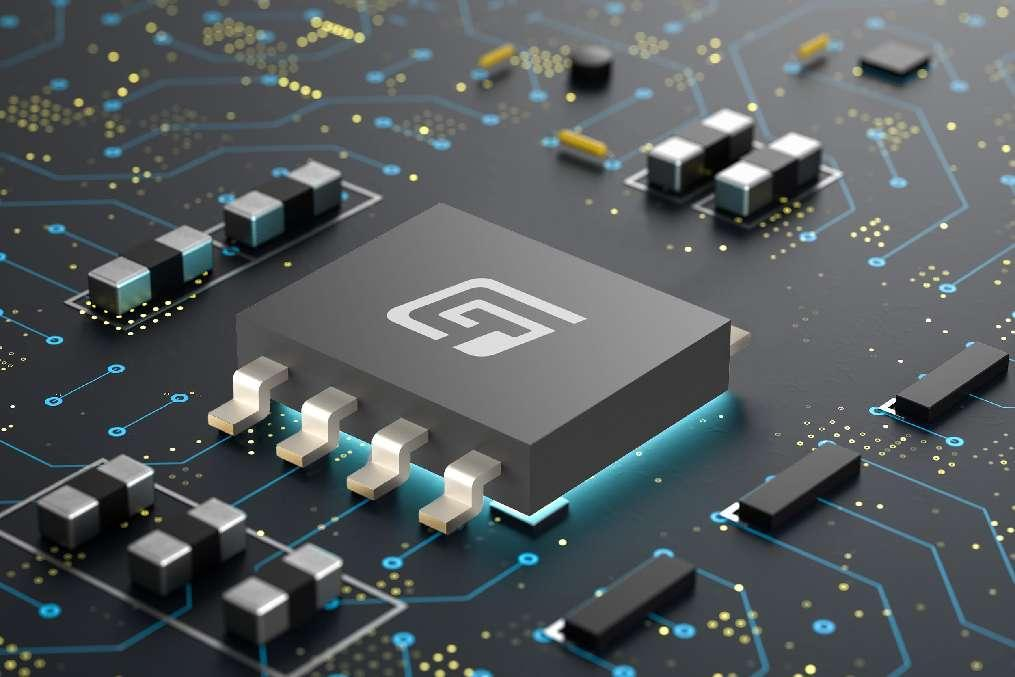
Juchen Co., Ltd.’s latest semi-annual report for 2022 shows that in the second quarter, both revenue and net profit reached a record high for the company in a single quarter. Following a significant increase in operating performance in the first quarter, the company achieved a quarter-on-quarter growth of 20% and 59%, respectively. Juchen Co., Ltd. stated that this was mainly due to the large-scale supply of SPD products and automotive-grade EEPROM products during the reporting period, driving rapid revenue growth. In the automotive-grade EEPROM sector, large-scale supply was achieved during the reporting period, with end customers including many mainstream domestic and foreign automotive manufacturers.
The company stated that it currently has a full range of automotive-grade EEPROM products at A1 and below levels, with application areas gradually extending from in-car cameras, LCD displays, and entertainment systems to core components such as body control modules, chassis transmission, micro-motors, and the three electric systems of new energy vehicles. End customers include SAIC, FAW, BAIC, GAC, Geely, Changan, BYD, Great Wall, Chery, NIO, Li Auto, Xpeng, as well as many mainstream domestic and foreign automotive manufacturers such as Tesla, Volkswagen, Renault, Toyota, Nissan, Hyundai, and Kia.
Juchen Co., Ltd. stated that it will actively develop automotive-grade EEPROM products that meet different levels of ISO 26262 functional safety standards, gradually achieving global leadership.
Domestic substitution window period has arrived.
In the past two years, factors such as chip shortages, tight production capacity, and changes in the international industrial landscape have accelerated the push for domestic supply chain localization among many domestic automotive companies. As an important market for EEPROM and other storage chips, the wave of domestic substitution is clearly a once-in-a-lifetime opportunity for local automotive-grade EEPROM manufacturers.
However, despite the domestic substitution opening up opportunities for local manufacturers, truly breaking into the automotive supply chain still requires solid capabilities. According to Jiwei Network, first, it is necessary to pass stringent automotive-grade certification. Automotive-grade EEPROM products must strictly follow the APQP process from product initiation to design, development, production testing, and final mass production. It should be noted that automotive-grade products are not only limited to product performance but also require a complete quality system certification.
Secondly, rich mass production experience is essential. Passing automotive-grade certification is just the first step; once entering the automotive manufacturer’s introduction phase, each manufacturer will have different compliance and customization requirements based on their product design and production processes. Therefore, to truly penetrate the automotive supply chain and gain recognition from automotive manufacturers, local manufacturers need to provide high-quality products and professional services.
Additionally, stable production capacity and delivery capability are currently the most critical factors. Ensuring supply chain security and avoiding shortages have become the main demands of global automotive companies in recent years. Currently, due to production capacity constraints, leading companies like STMicroelectronics have extended delivery times to over 50 weeks, presenting a good opportunity for local manufacturers to gain the trust of automotive customers. As the number one EEPROM supplier in China, Juchen Co., Ltd. has leveraged its strong supply chain management capabilities, stable product performance, and long-term stable relationships with domestic mainstream foundries to help customers solve previous EEPROM shortages, thereby accelerating the development of its automotive-grade business to some extent.

3. The Ministry of Foreign Affairs responds to the U.S. plan to expand chip export restrictions to China.

According to Jiwei Network, on September 13, Foreign Ministry spokesperson Mao Ning held a regular press conference and answered reporters’ questions regarding the Biden administration’s restrictions on semiconductor exports to China.
A reporter asked, according to reports, the Biden administration plans to expand restrictions on semiconductor exports to China next month, which can be used for artificial intelligence and chip manufacturing. What is China’s comment on this?
Mao Ning stated that the U.S. is engaging in technological hegemony, attempting to use its technological advantages to suppress emerging markets and developing countries. The U.S. claims to advocate fair competition based on rules, but in reality, it prioritizes America first and power supremacy. The U.S. aims to keep developing countries, including China, permanently at the low end of the industrial chain, which is unconstructive.

4. The advancing MEMS technology requires comprehensive strategies.
MEMS technology, continuously evolving towards intelligence, miniaturization, and low power consumption, is rapidly developing alongside technologies such as the Internet of Things, artificial intelligence, and 5G, optimizing functions and deepening applications, thus opening up broader market space.
According to statistics from Yole Developpement, the total market capacity of MEMS is expected to grow from $12.1 billion in 2020 to $18.2 billion by 2026, with an average annual growth rate of 7.2%, widely applied in sectors including consumer electronics, industrial applications, communications, automotive, medical, defense, and aerospace.
How can MEMS find its differentiated path in this competitive landscape? How can it continue to create its own new territory?

Challenges in Upgrading
“MEMS is a culmination of cutting-edge technologies, and establishing a foothold in this market requires a technology-driven approach and a solid technical foundation,” said Zhao Yanhui, Director of MEMS Product Line at ADI Asia Pacific. “Therefore, either adopting an IDM vertical integration model or establishing good partnerships is essential.”
As MEMS continues to evolve, Zhao mentioned that this involves various aspects such as design, packaging, and manufacturing, all of which need to be advanced comprehensively.
He further explained that low power consumption and low noise involve mechanical components, which may not seem directly related to power consumption, but the thrust size is crucial. A larger thrust results in greater displacement and signal strength, leading to higher power consumption, while a smaller thrust produces a weaker signal, placing high demands on subsequent processing links. Therefore, physical and electronic interactions must be considered from the design stage to achieve forward closed-loop control of ASIC and Mechanical Sensors.
Process technology is also critical for MEMS. Zhao noted that choosing between wire bonding or metal bonding involves many considerations. Additionally, since MEMS are sensitive to various forces, packaging technology must consider costs and application scenarios. Consumer-grade products typically use plastic packaging, which is cost-effective but susceptible to moisture and temperature changes that can induce stress; industrial applications generally require ceramic packaging, which may cost two to three dollars more.
“If long-term stability is a priority, better design and packaging must be chosen; if consumer-grade is the focus, cost advantages should be considered, possibly using plastic packaging processes and designs. This requires adaptability and is a comprehensive test of MEMS manufacturers’ technical capabilities,” Zhao summarized.
Comprehensive Innovation
Having accumulated years of experience in these areas, ADI has recently launched new MEMS products to meet the growing market demand.
Following ADI’s release of ultra-low noise, ultra-low power consumption accelerometers ADXL362, which are widely used in industries including wearables, smart homes, and medical applications, ADI has further optimized and launched the new ADXL367 to meet the upgraded market demands. This product reportedly achieves a 50% reduction in area, power consumption, and noise.
Additionally, the digital resolution has been increased from 12 bits to 14 bits, and a digital interface has been added, further enhancing product performance.
Particularly regarding power consumption improvements, Zhao believes that for certain applications, even a reduction of a nanowatt can lead to a better user experience, and customers are willing to pay the corresponding costs.
He cited that in a low-power monitoring mode of 200nW, a 225mAh button battery can continuously power the ADXL367 for 143 years, which is significantly lower than the battery’s inherent 1% self-discharge power loss. For a 1.2V 2500mAh AA rechargeable battery, it can operate continuously for 68 years at a 400Hz output rate, and even up to 324 years at 100Hz.
For the emerging automotive market, ADI has introduced the automotive-grade high-range accelerometer ADXL314, suitable for tire pressure monitoring, battery monitoring, and CBM applications. Its advantages include the use of a three-axis accelerometer for higher precision; operating currents of 50μA/170μA (low/high data rates), achieving output data rates of up to 3200Hz; and low noise characteristics, meeting AEC-Q100 validation requirements, with an extended temperature range of -40°C to +125°C.
Additionally, the ADXL359, as a new upgraded product featuring low noise, low drift, and low power consumption three-axis accelerometers, has been optimized for range, bandwidth, and noise, further enhancing its ability to suppress vibration correction errors (VRE), filling a gap in this market.
Intelligent “Yes or No”
From a trend perspective, the intelligence of MEMS is undoubtedly irreversible, but the industry’s eagerness for quick success may lead to superficial implementations.
In this regard, Zhao emphasized that the MEMS market is highly competitive, and as costs continue to decrease, MEMS manufacturers are striving to make their products increasingly intelligent to encourage end customers to pay more. However, it is crucial not to pursue intelligence for its own sake, simply stacking computational units or so-called AI chips and claiming to be intelligent.
“Understanding application needs, recognizing and genuinely addressing customer pain points, and then selectively adding digital functionalities is the way forward,” Zhao stressed.
For instance, the newly released ADXL367 integrates single-click and double-click monitoring algorithms for TWS wireless earphone applications, eliminating the need for TWS manufacturers to conduct additional algorithm analysis, as it can determine whether a single or double-click action is occurring by analyzing the output waveform, thereby relieving CPU pressure.
Future developments will undoubtedly be more intelligent. Zhao explained that while there is currently a complete signal chain to capture CBM vibration signals in real-time, the question remains: who will process this data? Clearly, it will be the customer, who will either upload it to the cloud or solidify it locally based on their processor algorithms. However, in the future, MEMS may directly inform whether such vibration signals are normal, and if such know-how is integrated into MEMS, it could provide customers with smarter solutions, making the future very promising.

5. 【Chip Vision】Concerning global electric vehicle market dominance! The EU battery regulations are about to be implemented.
According to Jiwei Network, when batteries become as important as oil, legislation regarding them is also imminent.
Recently, the EU is preparing to upgrade the “Battery Directive,” which has been in effect for over a decade, to a regulation. According to the current progress, the “EU Battery and Waste Battery Regulation” (hereinafter referred to as the “Battery Regulation”) is expected to be implemented next year. At that time, with the mandatory unified enforcement of the regulation, all batteries entering the EU market will have to comply with stricter standards, ensuring sustainability, high performance, and high safety characteristics throughout their lifecycle.
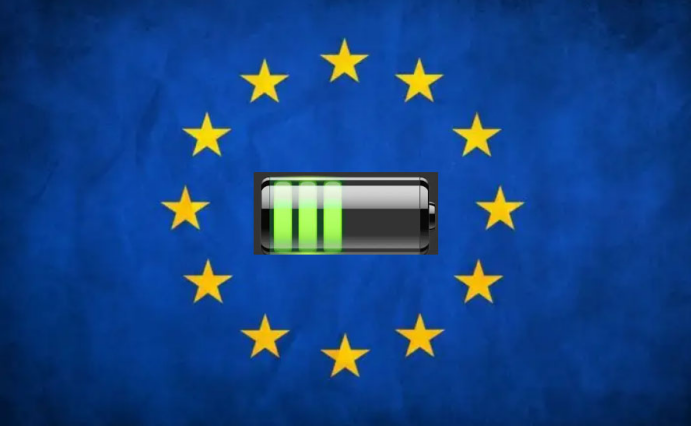
As the world’s largest battery manufacturing country, China currently lacks sufficient legislation regarding single commodity batteries, and the EU battery regulations undoubtedly provide new insights. Furthermore, the implementation of the EU battery regulations will have multiple impacts on batteries exported to Europe, and domestic battery industry chains and related manufacturers need to prepare early.
Legislation concerning the entire lifecycle of batteries
The EU has long placed great importance on batteries. As early as 2006, it established the Battery Directive to regulate rules concerning batteries and accumulators, aiming to reduce the production of harmful batteries and improve the recycling and processing rates of used batteries and battery waste.
In December 2020, the European Commission proposed a draft for a new battery regulation to replace the previous battery directive. In March of this year, the European Parliament and the EU Council also provided their proposals for the battery regulation. Subsequently, the three parties will negotiate to finalize the text.
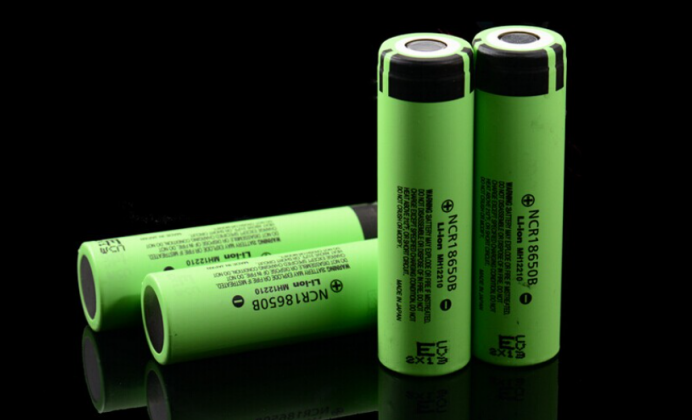
From the currently disclosed content, the EU battery regulation is more comprehensive, quantifiable, and stricter than the previous directive, covering all aspects of the battery lifecycle, such as raw material sourcing due diligence, use of recycled materials, carbon footprint, battery management systems, battery passports, labeling, recycling, and reuse, among others.
Raw material sourcing due diligence: Companies are required to establish a supply chain investigation mechanism during the raw material procurement phase to prevent the procurement of raw materials produced by labor abuse.
Use of recycled materials: Batteries must use a certain proportion of recycled raw materials, with requirements that by 2030, the proportion of recycled cobalt must reach 12%, and the proportions of recycled lithium and recycled nickel must reach 4%. By 2035, the proportion of recycled cobalt must reach 20%, and the proportions of recycled lithium and recycled nickel must reach 10% and 12%, respectively.
Battery passport: The new EU battery regulation introduces the concept of a battery passport, which aims to provide each battery with an electronic identity card that can be connected to the internet.
Carbon footprint: The EU battery regulation establishes a unified calculation method for battery carbon footprints, a carbon footprint performance grading method, and a maximum carbon footprint limit. The carbon footprint requirements will be implemented in three phases: in 2024, companies will be required to declare their carbon footprints; in 2026, carbon footprint labeling will be mandatory; and in 2027, the maximum carbon footprint limit will be enforced, prohibiting the sale of batteries exceeding this limit in the EU market.
Recycling rates: The EU battery regulation proposes specific implementation methods for recycling rates, aiming to increase the cobalt and copper recycling rates from 90% to 95% by 2026, and the lithium recycling rate from 35% to 70%; by 2030, the cobalt and copper recycling rates will increase from 95% to 98%, and the lithium recycling rate from 70% to 90%, with nickel recycling rates increasing from 90% to 95%.
Battery management systems: The EU battery regulation also introduces new requirements for battery management systems, requiring battery manufacturers to disclose battery management system (BMS) information so that battery recycling companies can assess the health status and remaining lifespan of the batteries for subsequent disassembly and reuse.
Wu Bixuan, a special researcher at the China Carbon Neutrality 50 Forum and a senior partner at Haihua Yongtai (Beijing) Law Firm, believes that according to the current progress, the battery regulation is expected to be implemented starting in 2023.
Building green thresholds aimed at global battery dominance
Every piece of legislation has its underlying significance. The EU’s enthusiastic promotion of the battery regulation is closely linked to its long-standing European Green Deal and the highly prioritized EU Battery Strategic Action Plan.
The carbon market reforms, carbon tariffs, and circular economy action plans introduced by the EU are all part of the European Green Deal, and the battery regulation is a crucial legislative measure under the EU’s “Circular Economy Action Plan” policy framework. Wu Bixuan believes that the “Circular Economy Action Plan” aims to weave a network of rules, establishing a green threshold for products in the European market, with batteries being one of the most emphasized product areas, making the battery regulation the first to be implemented.
In the era of new energy, the importance of lithium batteries is comparable to that of oil. Without energy independence, there can be no security. Countries are placing unprecedented emphasis on battery supply. The U.S. Department of Energy has released a national battery strategy blueprint, and the EU has also launched a battery strategic action plan. According to data from Boston Consulting Group, by 2030, the penetration rate of new energy vehicles in the U.S. and European markets is expected to reach 40-60%, driving rapid growth in demand for power batteries in these markets.
According to the EU battery strategic action plan, by 2030, 90% of market demand will be met by battery products produced by member states. However, at this stage, as the world’s second-largest new energy vehicle consumption market, the European market is severely lacking in power battery supply and is highly dependent on imports.
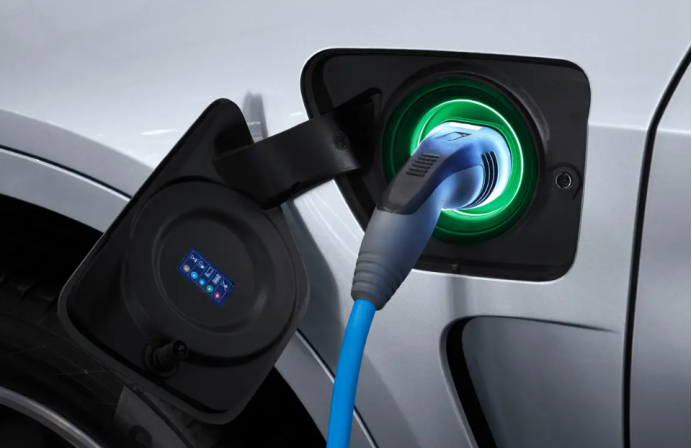
Just as efforts are being made to revitalize the electric vehicle industry, the EU is also taking multiple approaches to accelerate progress in the battery sector. Currently, more than a dozen large battery factories are under construction in Europe, such as Northvolt’s factories in Sweden and Germany, CATL’s factory in Germany, SK Innovation’s second factory in Hungary, and Tesla’s 4680 battery factory in Germany.
Boston Consulting Group predicts that driven by market demand, supply strategies, and policy regulations, global battery production capacity will shift towards the U.S. and Europe, with European battery production capacity expected to reach 26% of the global total by 2030.
Industry insiders point out that the EU battery regulation’s carbon footprint threshold setting may accelerate the layout of more battery production capacity in Europe. Additionally, by establishing calculation methods and rules for carbon footprints and material recycling, the EU aims to gain an advantage in the global battery industry standard competition, changing the dominance of China and Asia in the new energy vehicle battery industry chain, and ultimately competing for global electric vehicle and battery market dominance.
Quantitative indicators will have a profound impact on the industry chain.
Although the specific text details of the EU battery regulation are still subject to final negotiations, the general framework has been largely determined, and the newly added provisions are worth the attention of domestic industry chain enterprises.
From a legal perspective, Wu Bixuan believes that there are two key points to focus on: first, the upgrade from the 2006 “Battery Directive” to the “Battery Regulation” means that EU member states will implement unified rules simultaneously, no longer acting independently. Second, it requires batteries to have CE certification markings; starting from the implementation of the EU battery regulation, batteries must undergo CE certification and conformity assessment, meaning that third-party organizations will be introduced.
Compared to the previous battery directive, the EU battery regulation has added several quantitative indicators, such as requirements for carbon footprint declarations and grading, the proportion of recycled raw materials used, and recycling rate requirements. Battery industry chain enterprises are already feeling the potential pressure brought by these mandatory quantitative indicators.
“China has leading advantages in battery technology, manufacturing, and industry chain, but there are gaps in the standards and methodologies for calculating battery carbon footprints,” said Zeng Yuqun, Chairman of CATL. “We should quickly initiate research on battery carbon footprint standards and methodologies, establish a product carbon emission management system, participate in the formulation of global carbon neutrality rules, and promote the establishment of a mutual recognition mechanism for battery carbon footprint management with the EU.”
Battery manufacturers are feeling the regulatory pressure, which has even reached upstream material suppliers. Bao Wei, General Manager of Zhejiang Huayou Recycling Technology Co., Ltd., revealed that “the EU battery regulation requires a minimum proportion of recycled materials by 2030, but in reality, customers are already starting to demand, ‘I need my proportion to reach a certain level,’ far exceeding the EU’s regulatory requirements.”
On the other hand, regarding the quantitative recycling targets set by the EU battery regulation, there are currently no relevant standards in China. Whether to follow suit and introduce more refined recycling management regulations is a new issue that management departments and industry chain enterprises will face. Industry insiders believe that mandatory quantitative recycling targets are necessary to establish a more standardized recycling network. However, when it comes to quantification, a new question arises: “Is it self-reported by the enterprise, or is it determined by third-party testing methods?” This necessitates a fair assessment mechanism for the industry, tailored to the current development status in China.
“Additionally, for nickel and cobalt, the application areas are not limited to power batteries; how to account for recycled nickel and cobalt from other fields also needs a unified calculation indicator and rules,” the industry insider pointed out.
It is foreseeable that the new regulations on battery recycling and reuse set by the EU battery regulation will undoubtedly stimulate the battery recycling and reuse market. At the same time, the reuse of recycled materials and the price fluctuations of metals and other raw materials will jointly affect the final cost of batteries. From the new regulations on raw material due diligence and battery management systems, it is expected to promote enterprises to strengthen vertical integration and enhance data collaboration and sharing across the industry chain.
As the manufacturing of new energy vehicles and batteries has risen to a strategic height for various countries, standards and regulations have become indispensable tools for safeguarding the industry. In light of the imminent implementation of the EU battery regulation, domestic battery industry chain enterprises should prepare early.

6. With collective performance declines in the first half of the year, when will the “spring” for panel manufacturers arrive?

According to Jiwei Network, as panel prices continue to decline, the semi-annual reports of panel manufacturers also present a “chilling” scene.
Looking at the financial reports of several leading panel companies, although TCL Technology and Visionox achieved positive revenue growth in the first half of this year, both experienced varying degrees of decline in net profit, with the former’s net profit down 90.2% year-on-year and the latter’s decline nearing 80%; BOE and Shentianma saw both revenue and profit drop. The cold financial data reflects the “darkest hour” for the display panel industry and is a critical moment for panel manufacturers to rebound.
Under the influence of factors such as the pandemic and inflation, the display industry, which is undergoing a new round of adjustments, is facing intensified challenges. Declining customer demand, falling product prices, and slowing capacity growth in the large-size display sector are all challenges that panel manufacturers must confront.
Li Leiguang, Chief Analyst of the display industry at Jiwei Consulting, believes that the significant decline in panel prices this year, coupled with a noticeable decrease in panel companies’ operating rates, is expected to lead to a gradual halt in the downward trend of panel prices in the fourth quarter and a potential recovery.
Declining net profit trend is hard to stop.
The downward trend of panel manufacturers during this winter is not an exaggeration. On August 26, TCL Technology released its semi-annual report, stating that in the first half of 2022, the company achieved operating revenue of 84.522 billion yuan, a year-on-year increase of 13.60%; however, the net profit attributable to the parent company was 664 million yuan, a year-on-year decrease of 90.2%; the net profit after deducting non-recurring gains and losses was -627 million yuan, a year-on-year decrease of 111.36%. Among them, TCL Huaxing’s semiconductor display business achieved operating revenue of 37.26 billion yuan, a year-on-year decrease of 8.81%, with a loss of 2.27 billion yuan.
On August 29, BOE released its semi-annual report, showing that in the first half of this year, BOE achieved operating revenue of 91.61 billion yuan, a year-on-year decrease of 15.66%. The net profit attributable to shareholders of the listed company was 6.6 billion yuan, a year-on-year decline of 48.94%. The company stated that the decline in operating revenue was due to the continued low level of the semiconductor display industry, with major panel product prices falling, particularly in the display device business, which accounts for over 90% of BOE’s operating revenue, with revenue down 17.89% year-on-year.
On the same day, Visionox’s financial report showed that it achieved operating revenue of 3.411 billion yuan in the first half of the year, a year-on-year increase of 23.72%. However, due to increased depreciation costs from solidifying production lines and the significant upfront investments in the industry, the short-term revenue could not cover the previous costs, leading to a net loss of 1.149 billion yuan, a year-on-year decline of 78.08%.
Similarly, Shentianma also experienced declines in both revenue and profit, achieving operating revenue of 15.738 billion yuan in the first half of the year, a year-on-year decrease of 6.69%, with a net profit of 370 million yuan, a year-on-year decrease of 30.19%.
Not only domestic manufacturers but also the two major panel manufacturers in Taiwan, AUO and Innolux, saw their combined revenues hit a new low since the first quarter of 2020 in the second quarter, with AUO’s revenue reaching 144.412 billion New Taiwan dollars in the first half of the year, a year-on-year decrease of 19.14%, and Innolux’s revenue reaching 127.787 billion New Taiwan dollars, a year-on-year decrease of 27.83%.
It can be said that the semi-annual performance reports of these panel manufacturers reflect not only the operational status of the companies but also summarize the entire display panel industry’s performance in the first half of the year.
Li Leiguang, Chief Analyst of the display industry at Jiwei Consulting, believes that the significant decline in panel prices this year, coupled with a noticeable decrease in panel companies’ operating rates, is expected to lead to a gradual halt in the downward trend of panel prices in the fourth quarter and a potential recovery.
On one hand, due to the rising panel prices from 2020 to 2021, downstream customers tended to place orders in advance, leading to high inventory levels. Subsequently, factors such as inflation in overseas markets and high costs of complete machines have caused a decline in terminal market demand, prompting downstream manufacturers to repeatedly revise their panel procurement needs downward.
Data from institutions show that several panel manufacturers have officially implemented production reduction plans, which has further increased pressure on panel companies’ operating rates. CINNO Research data indicates that in May 2022, the average operating rate of domestic LCD panel manufacturers was 84.9%, down 3.5% from April; it is estimated that the operating rate of domestic TFT-LCD panel production lines will further decline by about 8% in June, reaching a new low since the pandemic in 2020. According to data from TrendForce, the operating rate of panel manufacturers in Q3 is expected to drop to 70%, a significant decrease of nearly 7.3% compared to Q2.
Regarding prices, institutions predict that panel prices will continue to decline in August, and most LCD TV panel prices will remain on a downward trend in September.
Can new incremental businesses boost performance?
In response to performance losses and industry downturn challenges, panel manufacturers are not only reducing costs and increasing efficiency but also accelerating the expansion of new businesses and improving capacity layouts, with growth primarily coming from IT production lines, automotive applications, and deepening exploration of new display businesses for VR/AR.
In the first half of the year, TCL Huaxing achieved rapid growth in the high-end IT segment by improving its mid-size product lineup and customer structure, while its automotive business also saw significant breakthroughs with several key customers, leading to substantial increases in shipment volume and revenue. Its T9 production line, positioned for mid-size IT and automotive applications, has been successfully powered on.
Visionox has integrated core customer IT product supply chains and is rapidly advancing the development and launch of new products with customers. For automotive displays, Visionox continues to explore innovative products after supplying customized products like transparent A-pillars, collaborating with several automotive brands to develop and promote customized OLED automotive display products, enhancing communication and cooperation with end automotive manufacturers to promote mass production applications.
In terms of technology development, Shentianma is focusing on key technology layouts in mobile smart terminals, automotive, IT, industrial control/medical segments, and intelligent sensing. In the first half of the year, it also invested in establishing an automotive display R&D center in Wuhu, Anhui, focusing on the development of complex modules for automotive displays.
Similarly, in the automotive sector, BOE has achieved the number one market share globally. Its smart terminal product series is gradually improving, with new products like the 65-inch and 75-inch ultra-intelligent screens, C2P, and C2S integrated machines being launched, with sales of large-size products increasing by over 160% year-on-year.
Regarding the impact of these new incremental businesses on panel manufacturers’ performance, Li Leiguang analyzed that terminal sales in the IT sector have been very disappointing this year, and relying solely on IT products cannot change the overall situation; while in the automotive sector, although shipment volumes are gradually increasing, explosive growth is not expected, and it cannot save the entire market; as for VR/AR, the true market demand in this field has yet to open up, and the demand area is relatively small, thus having limited impact on reducing panel production capacity.
“In the current terminal products, mobile phones, tablets, laptops, and TVs have a significant influence on panel prices. Without a recovery in the terminal market for these products, the panel industry’s prosperity will not see a substantial increase,” he predicted.
However, after experiencing the darkest hour, recent industry news suggests that the inventory adjustment in the panel industry may soon come to an end, and it is expected that the supply chain will stabilize in 2023, with terminal market demand for panels potentially bottoming out and rebounding in the second quarter of that year, at which point the performance of the aforementioned panel manufacturers may present a different picture.

7. Insiders reveal that Apple will be the first to adopt TSMC’s N3E technology.

According to Jiwei Network, on September 14, Nikkei Asia reported that Apple will be the first company to use TSMC’s latest process chips next year, which will be partially used in iPhones and Macs.
According to three insiders, the A17 mobile processor currently under development will use TSMC’s N3E chip manufacturing technology for mass production, expected to be launched in the second half of next year. They stated that the A17 will be used in high-end products in the iPhone product line scheduled for release in 2023.
N3E is an upgraded version of TSMC’s current 3nm production technology, which just began to be used this year. Two insiders added that Apple’s next-generation M3 chip for Mac products will also use the upgraded 3nm technology.
TSMC recently stated at a technology seminar in Hsinchu that N3E will provide better performance and power consumption than the first version of the technology. Industry insiders say that the upgraded production technology is also designed to be more cost-effective than its predecessor.
As TSMC’s largest customer and a major driver of new semiconductor technologies, Apple remains its most loyal partner in adopting the latest chip technologies. Earlier reports from Nikkei Asia indicated that this American tech giant was the first to use TSMC’s first-generation 3nm technology in some upcoming iPads.
Previously, Intel had informed TSMC that it hoped to secure production of 3nm technology before the end of this year or early next year to become one of the first adopters like Apple, but it has since postponed its orders at least until 2024.
However, 2023 may mark the second consecutive year that Apple will use TSMC’s most advanced chip manufacturing technology only for part of its iPhone product line. In 2022, only the high-end iPhone 14 Pro series adopted the latest A16 core processor, which was produced using TSMC’s most advanced 4nm process technology. The standard iPhone 14 series used the older A15, which was also used in the iPhone 13 and iPhone 13 Pro models released in the second half of 2021.
Dylan Patel, Chief Analyst at Semianalysis, who was interviewed by Jiwei Network, stated that Apple may introduce greater differentiation between its high-end and non-high-end models by utilizing different levels of production technology. He noted that previously, the main differences were in the screen and camera, but this could expand to include processors and memory chips.
According to analysts’ estimates, transitioning from the 5nm series (including 4nm chips) to 3nm chips will increase the cost of silicon wafers by at least 40% for the same area.
For more news, please click to enterthe Aijimi Mini Programto read
1. Reports indicate that Lenovo’s first self-developed 5nm chip has successfully taped out, aimed at tablet computers.
2. The advancing MEMS technology requires comprehensive strategies.
3. 【IPO Values】Business scale and production capacity are not competitive with domestic peers; how long can the continuously loss-making Zhongxin Jingyuan last?
4. 【Chip Vision】Concerning global electric vehicle market dominance! The EU battery regulations are about to be implemented.
5. Shanghai’s integrated circuit industry scale reaches 250 billion yuan, with 14nm advanced processes achieving mass production.
6. With collective performance declines in the first half of the year, when will the “spring” for panel manufacturers arrive?
7. Shanghai Guowei Si Erxin is suspected of violating regulations by establishing a company in Taiwan; the person in charge has been interviewed.
8. Abandoning Nvidia! General Motors chooses to develop its own autonomous driving chips.
9. Google fails to overturn the EU antitrust ruling, facing a hefty fine of 4.1 billion euros.
10. Numerous fabless manufacturers: inventory adjustments may continue until the first half of 2023.

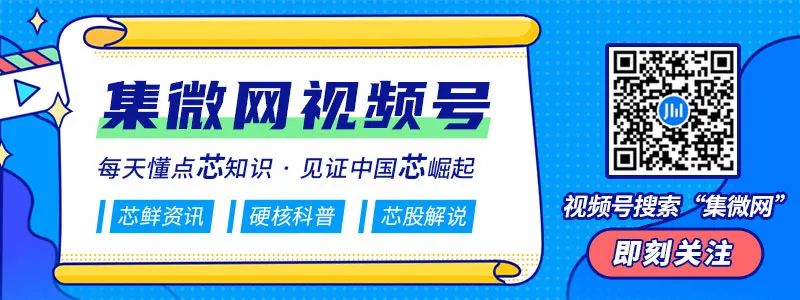
Share
Like

Watch